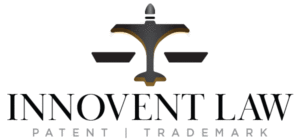Congratulations on patenting your invention! Now let’s look at ways to generate income from your intellectual property rights through patent licensing. You can exclusively license your patent to one entity or grant a non-exclusive license to more than one individual or entity.
One of the simplest ways of licensing a process is to identify entities who might benefit from your licensed process and open a dialogue with those companies to see whether they would be interested in your process. You can find those companies by attending trade shows, searching online industry databases for companies who could benefit from your patent, or finding entities which target similar audiences.
You can also leverage the United States Patent and Trademark Office (USPTO) official gazette, and for a fee, publish a notice regarding the availability of your patent for license.
When you license your patent rights, you can either charge the licensee a lump sum for the rights or collect royalties. These royalties can either be based on sales and profits or be independent from those values.
What is patent licensing?
A license is an agreement that lets someone else commercially use or develop your invention for a given period of time. To clarify the names, a licensor is the owner of the invention, and the licensee is the person receiving the license. Typically, in licensing deals, you will receive payment for the license. This payment may be structured as a single-time payment or as continuing payments called royalties.
Where to start the patent licensing process?
Find potential licensees who might be interested in your work
A manufacturer with a strong network might be the best place to start. They tend to know other companies in the same industry who might benefit from your invention, and usually have strong distribution channels. One of the best places to start if you’re looking to expand your network and meet like-minded manufacturers would be to identify industry related organization and trade shows and start there. Depending on your industry, trade shows might be your best bet since they have various companies with similar interests in one place and you can avoid having to cold call or cold email potential licensees.
Another way of finding potential licensee besides attending the trade shows is to make a list of competitors who are in the same industry, make similar products, and are looking to grow their portfolio. You can research their portfolio through Google Patents, and start a search based on the company name. If they own a few patents which were assigned to them from other companies, they might be more open to look at your invention and patent. But even if they don’t, it never hurts to reach out. Try to find common people you know. For example, you can search a company name on LinkedIn and see if you know anyone who works at that company who would be willing to make an introduction.
You can also can publish a notice in the USPTO Gazette regarding the availability of your patent for license. This will cost you a nominal fee (like everything else related to the USPTO).
What should the patent licensing agreement spell out?
It’s always best to have your licensing agreement drafted and negotiated by an intellectual property lawyer who is familiar with your product, portfolio, and your vision for your company. The agreement should spell out any upfront payments, amount of royalties, length of the licensing agreement, and any potential infringement issues you can think of. A good brainstorming session with your attorney is necessary for a solid agreement. The agreement should also spell out whether it’s an exclusive or non-exclusive licensing agreement. If you would like to keep the right to make and sell your invention, this is where you should carve out those rights.
Difference between an exclusive and non-exclusive patent licensing agreement
Would you rather license your invention to only one company or entity exclusively, or would you rather give rights to more than one person or company?
An exclusive license transfers patent ownership to the licensee, but the patent owner gets to keep the title to the patent. In some cases, the patent owner also transfers the right to sue for infringement as well as the right to make and sell the goods or services.
If the patent owner would like to give exclusive rights to a person or company in a specific industry, he or she can carve out those rights in the agreements and give the licensee an exclusive license for a specific industry.
Alternative to patent licensing: The Assignment
If you don’t want to deal with the minutiae of licensing and would rather just hand over control of your patent to a person or individual, you can assign your rights rather than license your patent. An assignment is a permanent transfer or sale of ownership rights. The patent owner in this case is the assignor, and the purchaser of the patent rights is the assignee. Once you assign your patent rights, you no longer own the patent, but the name of the inventors and list of assignments will always be recorded on the patent.
How much should you charge for licensing your invention?
Pricing a patent license should involve identifying the value of the patent rights to the licensee (how much could they potentially make from selling this or using it) and apportioning the net benefits between both parties to the agreement (i.e the licensor and licensee). As mentioned earlier, payments can be one lump sum fee or royalties. These royalties can be “running royalties” based on metrics such as sales or independent royalties (independent of sales or profit results).
Interested in learning more about how to secure your intellectual property?
Schedule a free discovery call with our team today.
